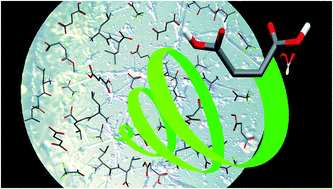当前位置:
X-MOL 学术
›
CrystEngComm
›
论文详情
Our official English website, www.x-mol.net, welcomes your
feedback! (Note: you will need to create a separate account there.)
Serendipitous isolation of a disappearing conformational polymorph of succinic acid challenges computational polymorph prediction†
CrystEngComm ( IF 2.6 ) Pub Date : 2018-05-30 00:00:00 , DOI: 10.1039/c8ce00625c Paolo Lucaioli 1, 2, 3, 4, 5 , Elisa Nauha 1, 2, 3, 4, 5 , Ilaria Gimondi 5, 6, 7, 8 , Louise S. Price 5, 7, 9, 10 , Rui Guo 5, 7, 9, 10 , Luca Iuzzolino 5, 7, 9, 10 , Ishwar Singh 1, 2, 3, 4, 5 , Matteo Salvalaglio 5, 6, 7, 8 , Sarah L. Price 5, 7, 9, 10 , Nicholas Blagden 1, 2, 3, 4, 5
CrystEngComm ( IF 2.6 ) Pub Date : 2018-05-30 00:00:00 , DOI: 10.1039/c8ce00625c Paolo Lucaioli 1, 2, 3, 4, 5 , Elisa Nauha 1, 2, 3, 4, 5 , Ilaria Gimondi 5, 6, 7, 8 , Louise S. Price 5, 7, 9, 10 , Rui Guo 5, 7, 9, 10 , Luca Iuzzolino 5, 7, 9, 10 , Ishwar Singh 1, 2, 3, 4, 5 , Matteo Salvalaglio 5, 6, 7, 8 , Sarah L. Price 5, 7, 9, 10 , Nicholas Blagden 1, 2, 3, 4, 5
Affiliation

|
A conformational polymorph (γ) of succinic acid was discovered in an attempt to purify a leucine dipeptide by cocrystallization from a methanol solution in the presence of various impurities, such as trifluoroacetic acid. The new γ-form was found to have crystallized concomitantly with the most stable β form. In light of this situation, a crystal structure prediction study was undertaken to examine the polymorph landscape. These studies reveal that the γ polymorph is thermodynamically competitive with the other observed polymorphs; having a more stable folded conformation than the planar crystalline conformation in the β form, but being stabilized less by the intermolecular interactions. Simulations and experiment show that the folded conformation is dominant in solution, but that trapping long-lived crystals of the new metastable polymorph may be challenging. Thus the γ polymorph provides a stringent test of theories for predicting which thermodynamically plausible structures may be practically important polymorphs.
更新日期:2018-05-30











































 京公网安备 11010802027423号
京公网安备 11010802027423号